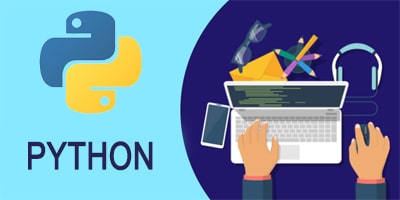Machine Learning with Python is a large subject that requires in-depth research. We will attempt to cover as many subjects as possible in this article about Machine Learning to give you a clear grasp of this topic before you enroll in the Machine Learning with Python course.
An Overview: Machine Learning
Making robots think, act, and learn like humans is what machine learning is all about. It is the channel that allows machines to learn from their past encounters and enhance their production accuracy throughout time. Isn’t it difficult for anyone to program every activity? However, with Machine Learning, you don’t have to design each job. Instead, the computer creates an algorithm based on the work at hand and the available information.
Why only Machine Learning?
This is a serious question to answer as we must first try to understand how things were before it comes in. Have you wondered what the situation was like before humans invented Machine Learning? Humans have to labor hard to strive to make any decision. Is there a limit to how far humans can think to develop new technological inventions? How much information can a person recall to make a great decision? Even after putting in a lot of effort, the results were not adequate.
But thankfully, people are always inventing new technologies, and Machine Learning is one of them. Humans may teach a machine to learn so that it can work efficiently while making its judgments based on facts and experiences accurately.
Let’s have a look at why Python is a superior option for Machine Learning courses.
What are the benefits of Python when it comes to Machine Learning?
Python is the most widely used Machine Learning programming language. But why is Python being used in Machine Learning? Let’s see if we can find a solution to this query.
Python has recently established itself as the backbone of Machine Learning. In comparison to other object-oriented languages, it is the most simple to learn programming language. It is frequently utilized for data analysis and data mining, and it may be used to create a variety of Machine Learning models and techniques. Python is known for its platform neutrality and readability, which means anyone, can utilize the same code on any system without even making any modifications. All of this makes Python an ideal language for Machine Learning.
Introduction to Machine Learning with Python Course
This is a four-week course where you will study the fundamentals of machine learning with Python, a popular language of programming. Moreover, you will get to learn about data exploration and machine learning techniques such as regression, classification, unsupervised, and supervised learning, among others.
Here you can experiment with Python and built-in tools like Matpotlib, Pandas, and Scikit-Learn to explore and visualize data. Clustering, classification, regression, and sci-kit learning are all sought-after machine learning talents that this course provides you to add to your CV. To demonstrate your competence, you can add fresh projects to your portfolio and obtain a certificate in machine learning.
Objectives of Machine Learning with Python Course
- Develop Python abilities using a variety of Machine Learning methods.
- Learn using Classifications, Regressions, Supervised and Unsupervised Learning, and more.
- Learn about KNN, SVM, Clustering, and Decision Trees which are a part of advanced machine learning algorithms.
- Taught about building and deploying deep learning and data visualization models in real-world projects.
Features of Machine Learning with Python Course
- Attend 48 hours of live instructor-led sessions
- Complete 80 hours of assignments and multiple-choice questions.
- Get hands-on practice for 45 hours.
- Practice through 10 real-world live projects.
- Progress from Fundamentals to Advance Level
- Get codes reviewed by Professionals.
Why attend this course?
For the past three years, Data Science has ranked first among the emerging jobs that professionals or novices are applying for. Thousands of businesses are looking for somebody who can turn the data sets into strategic projections. To meet this need of professionals, you need to study this in-demand machine learning course to gain Python abilities.
As more businesses have realized the possibilities of using this tool in the post-Covid situation, most have switched their operations with the help of AI and Machine Learning. Thus it can be said, that profit from the need for the most required job of the twenty-first century with a program tailored is this as it meets the needs of every sector.
Prerequisites for Machine Learning with Python Course
- It is necessary to have a working understanding of at least one code language.
- Python is the finest programming language for Machine Learning training courses since it is straightforward.
Who can sign up for this course?
- Any individuals who have got interested in applying for Machine Learning to solve challenges.
- A python is a great tool for software or data engineers who do quantitative analysis.
- Economists, analysts, and researchers are all types of people that can work with data.
Skills the course provides
- Python programming expertise
- Using the Pandas library to manipulate and analyze data
- Visualizing data through Seaborn and Matplotlib.
- Describe the distribution of data through variance, standard deviation, and more.
- Calculating hypothesis testing using conditional probability.
- Variance Analysis
- Creation of models of linear regression
- Using the technique of Dimensionality reduction
- Modeling using Logistic Regression Clustering via K-means and Hierarchical Clustering.
- Creating KNN algorithm models to determine the best K-value
- Constructing Decision Tree models for classification and regression
- Regularisation is an example of hyper-parameter tweaking.
- Sampling, boosting and bagging with bootstrap.
- Utilizing ensemble approaches like averaging, maximum voting, and weighted averaging.
- Factor Analysis
- Modeling using models of Random Forests
- Identifying the most appropriate amount of component/factors
- Using crucial measures Apriori Algorithm – Support, Lift and Confidence
- Evaluation through model parameter
- Measuring key performance indicators
- One-eigenvalue criteria using scree plot
Conclusion
Thus, it can be stated that the course curriculum focuses on the finer points of statistical principles and theories, as well as the complexities of the Python programming language along with the concepts and ideas of Machine Learning. Learners in this program will have the opportunity to investigate the methods and processes of developing algorithms using supervised and unsupervised learning, classification strategies, regression mechanics, and time series modeling using the Python software tool. Through this Machine Learning with Python Course, students will get the chance to work on a variety of real-world technical projects to enhance their skills and put their theoretical knowledge into practice.

















